WEKA unveiled the fourth generation software-based solution delivering results with artificial intelligence (AI), machine learning (ML), and other next-generation modern workloads via a single, high-performance, scalable platform for hybrid cloud and edge environments available in any public cloud. According to WEKA, there continues to be a shift to cloud deployments as organizations look to embrace digital-first strategies, harnessing insights and discoveries using AI and ML.
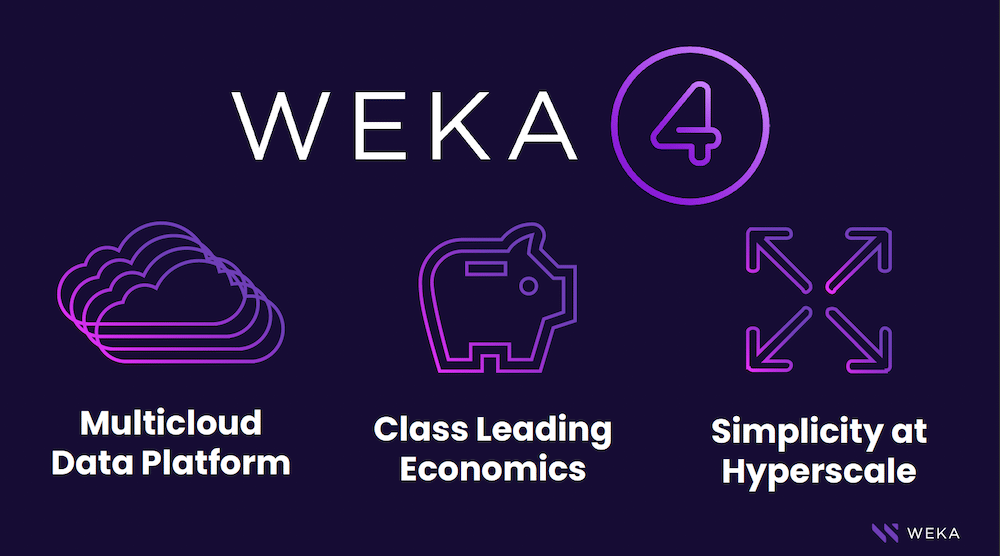
There are challenges when considering cloud deployments, especially for large, resource-intensive workloads. The benefits of moving workloads such as scalability, flexibility, security, and elasticity are well documented, but the struggle continues to be moving specific applications to the cloud.
Architecting workloads to run in a cloud environment requires a different approach than designing for on-premises. Cloud infrastructures operate on loosely connected systems, while workloads intended for a dedicated infrastructure fail to meet performance requirements or consume excessive resources when running in the cloud. Low-latency or IO-intensive applications have often been deemed too difficult or costly to run in the cloud and have remained on-premises.
According to 451 Research and Gartner, 76 percent of companies use two or more public clouds. Corporations with more than a billion-dollar revenue stream are twice as likely to be using three or more clouds than smaller businesses. With proprietary data set lock-in and prohibitive economics associated with data egress, along with the difficulty of moving data between cloud environments, have slowed the goals of enterprises adopting a multi-cloud strategy.
The WEKA Data Platform is, “the industry’s first multi-cloud data platform for AI and next-generation workloads.” The fourth-generation WEKA Data Platform provides that single, unified product with consistent high performance and robust data services that deliver a seamless, simplified data management experience with best-in-class economics – regardless of where your data and applications are located.
WEKA 4.0 – New Cloud Support
WEKA already provides seamless integration with the compute and object storage resources of Amazon Web Services (AWS). With this announcement, they’ve added support for Google Cloud Platform (GCP) and Oracle Cloud Infrastructure (OCI) with Azure support to follow soon. This is designed to give customers a single, unified deployment option that performs consistently across the edge, core, hybrid, and multi-cloud environments – regardless of preferred cloud vendor or location.
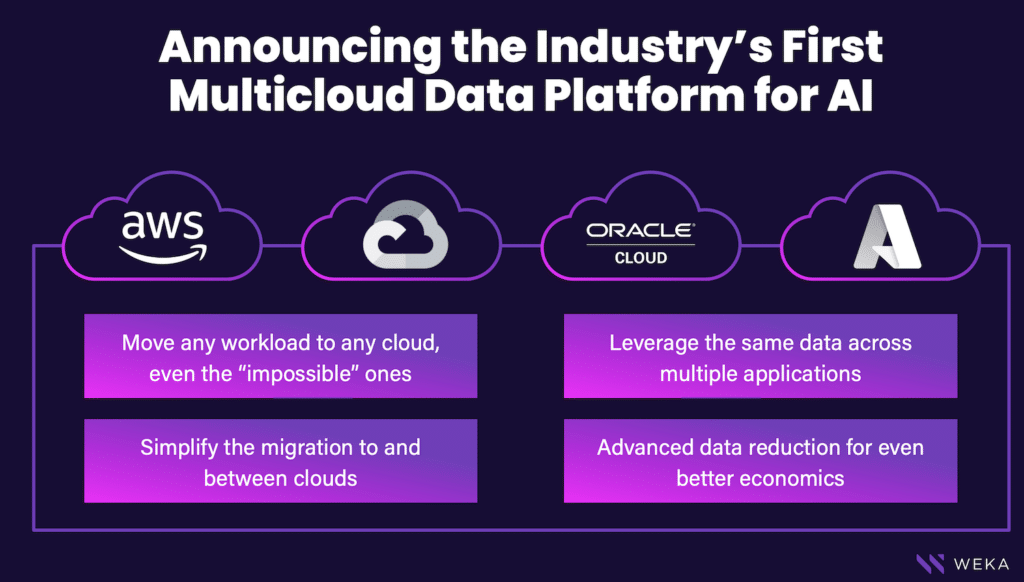
WEKA seamlessly combines the performance tier of NVMe-enabled cloud compute instances for the lowest latency with the capacity tier of native object storage for massive scalability within a single namespace. The integrated data management automatically and seamlessly moves data between hot tier and object storage data lake, making relevant data available for the highest performance.
Interestingly, Oracle’s Cloud changes the dynamics some for WEKA’s cloud delivery, thanks in large part to its performance profile. In our testing, we’ve found Oracle’s Bare Metal offerings to be quite peppy thanks to their aggressive use of NVMe SSDs and fast networking. WEKA seems to agree that Oracle is fast, as they’ve highlighted topline numbers of 17 million IOPS and 2TB/s on the platform.
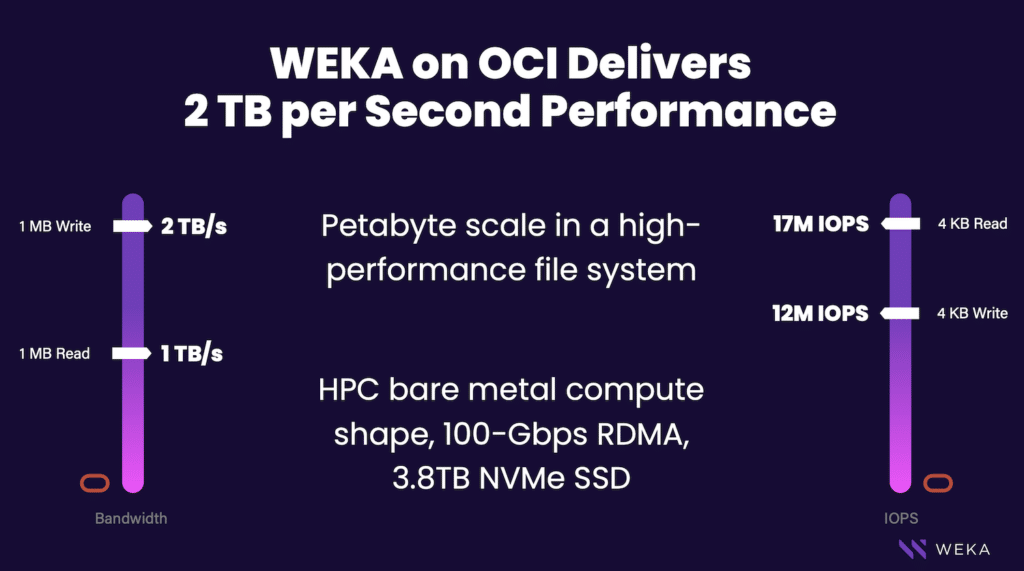
To help customers understand their options in the cloud, WEKA offers a sizing tool. Right now this just covers the i3en instances from AWS, but the intent is to provide a comprehensive tool that helps customers make decisions across all of the new clouds WEKA supports.
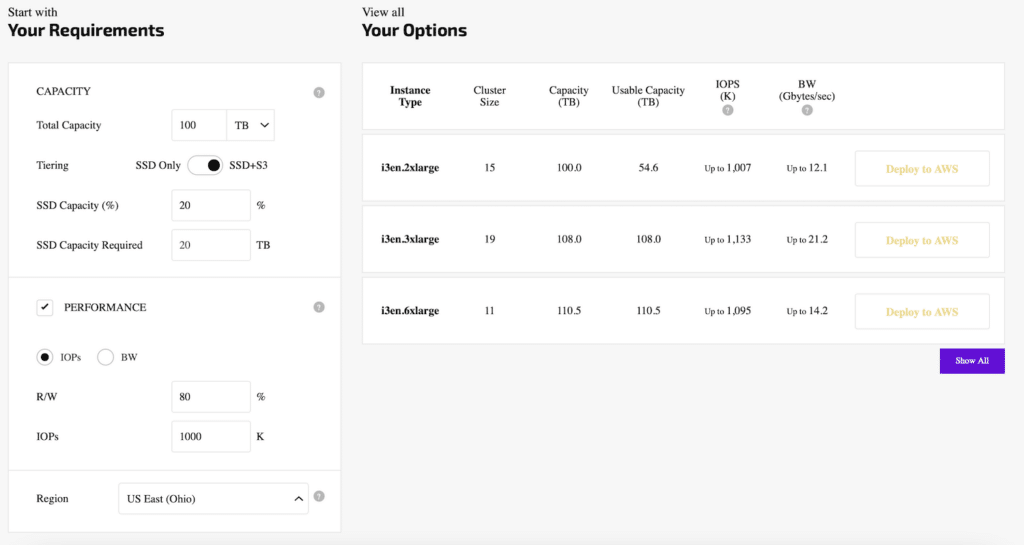
New QLC SSD, Data Reduction Support
WEKA 4 provides three ways for customers to optimize their environments for cost, availability, and scale. Tiering to local and cloud object storage, a choice of capacity (QLC) or performance-optimized (TLC) NVMe drives, and new, filesystem-wide data reduction can lead to an increase in effective capacity while reducing costs.
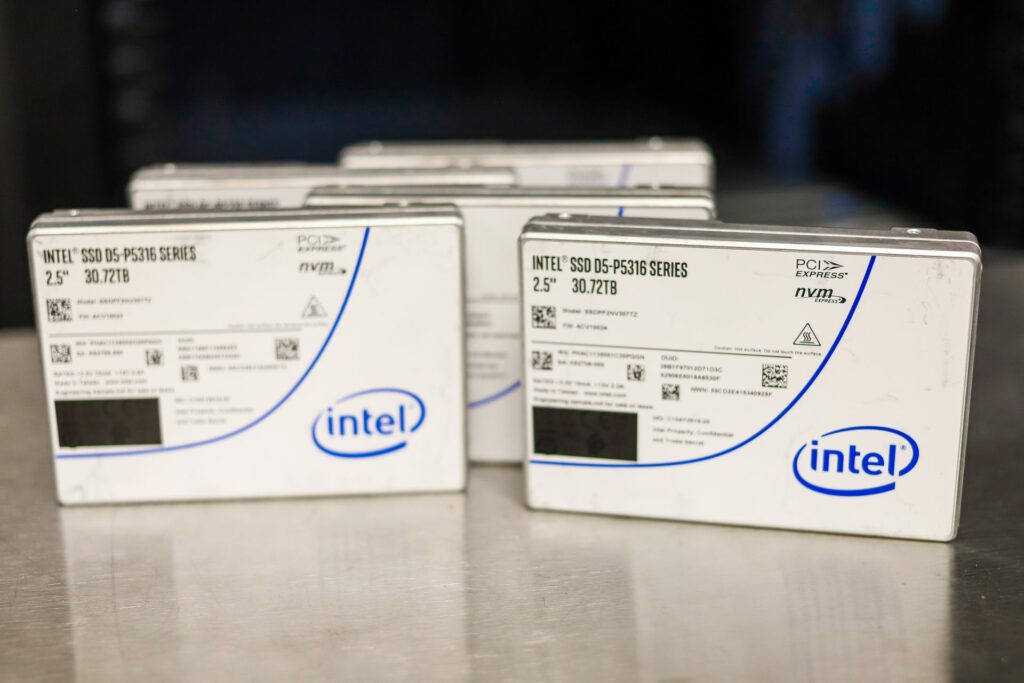
Solidigm P5316 QLC SSDs
Tiering has been available in AWS, in fact, most WEKA customers in AWS are using S3 object storage in some form. Tiering is the most obvious use case, but it’s also a great repository for snapshots and colder data that still needs to be available. On-prem customers can also leverage object storage in the cloud, which all happen to talk S3, as a tier. Lastly, WEKA indicates that they’re seeing snapping to object storage as a great way to migrate workloads within a cloud or between cloud providers.
When it comes to SSD support, WEKA has added support for QLC SSDs generally, with initial support for the Solidigm P5316. QLC SSDs offer great density benefits and allow customers to tune certain parts of their storage for cost-optimized capacity and performance. These SSDs do bring with them some additional management requirements, however. The P5316 for instance needs to be written in 64K blocks. Thus, WEKA has optimized its software when these drives are present, ensuring writes are coalesced to be drive-friendly, limiting write amplification. In many cases, WEKA expects customers will layer a TLC write cache on top of the QLC drives to help manage writes.
In one last move around data placement and efficiency, WEKA has introduced data reduction for the first time. This engine will work on-prem and in the cloud, helping customers manage their data footprint. WEKA data reduction is currently with beta customers and should GA later this year.
GUI Update
While most WEKA customers spend their time interacting with the system via scripts and playbooks, there has been a call by customers to bubble up more data in the GUI for rapid interpretation. With WEKA 4.0, they’ve provided a fully redesigned UI.
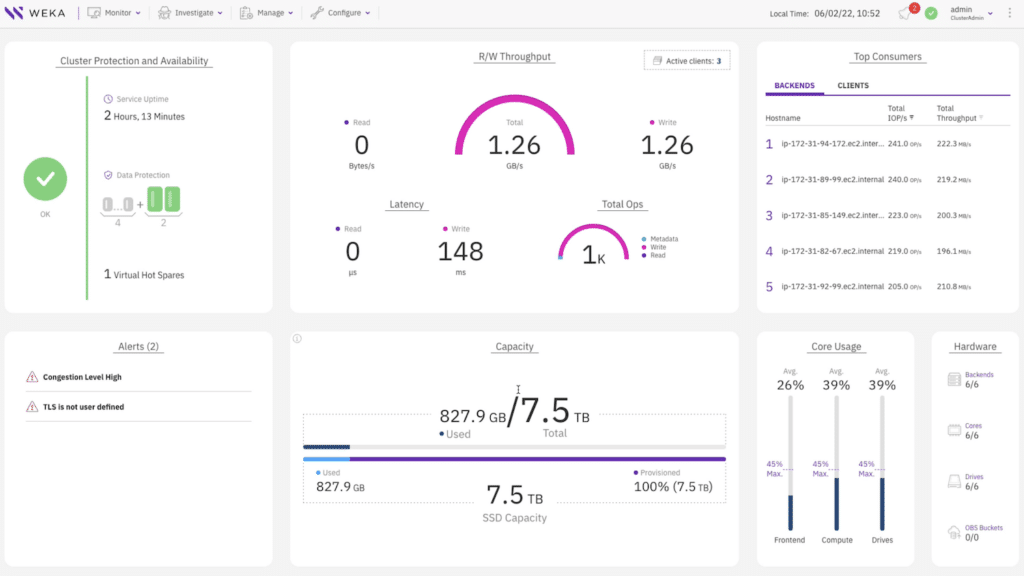
The new UI improves immediate visual ease of use via six widgets on-screen. WEKA has bundled common management and reporting tasks into four tabs at the top of the screen for those who need to dive in more deeply. They’ve also added new event log reporting and customizable charting. These enhancements should help to streamline repeated operations and simplify day-to-day tasks.
WEKA 4 also introduces NFSv4 and Server Message Block (SMB) support for high-performance MS-Windows workloads. Customers can condense their data infrastructure stack and replace many legacy systems with a single zero-copy, zero-tuning WEKA Data Platform deployment.




 Amazon
Amazon